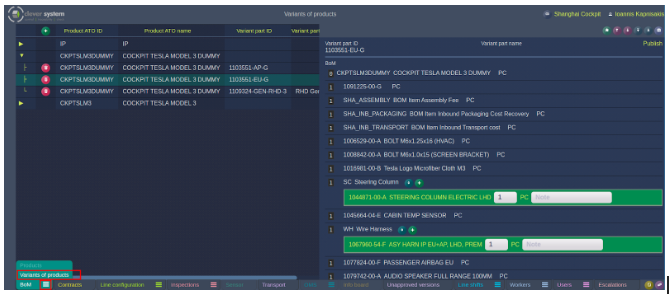CLEA BOM with ATO-model
From PlcWiki
1. Overview of Variants of products in BOM
An alternative method to create a Bill Of Material (BOM) file is by using the Assembly To Order (ATO) model. This type of BOM file is suitable for plants which produce products that differ in just a few part numbers (product variants) since it has a more user friendly interface compared with the BOM in the common style of list.
To create this kind of BOM, in CLEA from the bottom menu bar click on BOM options > Variants of products
The page of “Variants of products” is obtained :
As can be seen from the image above the “Variants of products” page is divided in two parts. On the left part, it shows the various product ATO-models (referred also as product classes ) (IP, CKPTSLM3DUMMY, CKPTSLM3) and their corresponding product variants under each of them.
On the right part, with a green background, are listed the used part numbers for each product variant while the product numbers within dark blue background are the so called “constant” and they are used from all the product variants. In the following chapters, the necessary steps, in order to create this type of BOM, are presented.
2. Product classes and product variants
2.1 About product classes and product variants
The product classes and product variants are both parts of the “Variants of products” of a BOM file. They specify the different products with their variants and they are displayed in a tree structure.
A product class is marked with the arrows. By clicking this arrow the list can be extended by displaying the individual “branches” marked with
and
that correspond to the product variants. The overall tree structure of a product class, found on “Variants of products”, is shown below.



